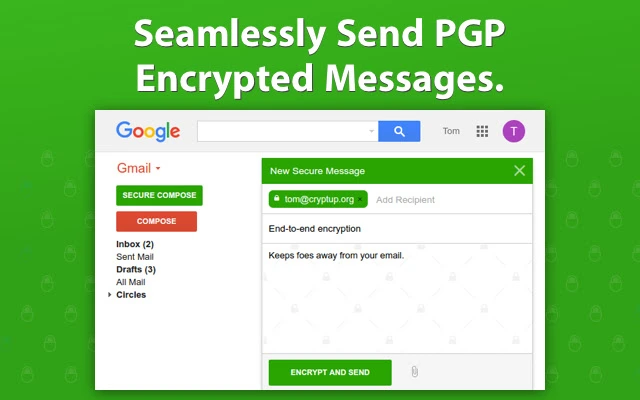cryptography
cyber security
digital security
email
encryption
military communications
security
businesssecurity, cyberawareness, cybersecurity, dataprivacy, digitalprivacy, emailencryption, emailsecurity, encryptionapp, encryptiontools, endtoendencryption, flowcrypt, gdprcompliance, gmailextension, hipaacompliance, infosec, militarysecurity, openpgp, opsec, pgpencryption, privacytools, protonmailalternative, securecommunication, secureemail, securemessages, zerotrust
9M2PJU
0 Comments
How FlowCrypt Works — And Why Email Encryption Matters
In our hyper-connected world, email is still the lifeline of digital communication. But most people don’t realize just how insecure traditional email really is. It’s like sending a postcard through the mail—anyone along the route can read it.
This is where FlowCrypt steps in. If you’re looking to secure your email with end-to-end encryption without the headache of learning cryptography, FlowCrypt makes it not just possible—but easy.
Let’s break down how FlowCrypt works, and why email encryption is more than just a good idea—it’s essential, especially in business and military environments.
✉️ What Is FlowCrypt?
FlowCrypt is a PGP-based email encryption tool that integrates directly with Gmail (via a browser extension) and is also available for Android and iOS. It allows you to encrypt, sign, decrypt, and verify messages, all while keeping the experience as familiar and simple as composing a regular email.
It turns your inbox into a secure messaging platform—without forcing your contacts to jump through hoops (even if they don’t use encryption yet).
🔧 How FlowCrypt Works
1. It starts with a key pair
When you set up FlowCrypt, it creates a cryptographic key pair:
- A public key that you share with others.
- A private key that stays on your device and is used to decrypt incoming messages.
These keys are the foundation of your secure communication.
2. Encrypting a message
When you hit “Secure Compose” in Gmail (added by the FlowCrypt extension), the email you write is encrypted before it ever touches Google’s servers. Only the recipient, with the correct private key, can decrypt and read it.
Attachments? Also encrypted. That 10-page contract or personal document? Nobody but your recipient can open it.
3. Receiving a secure message
When someone sends you an encrypted email, FlowCrypt uses your private key to decrypt it directly in your browser or app. No one—including FlowCrypt—can read it in transit.
4. Talking to someone who doesn’t use encryption?
No problem. You can send them a password-protected message. They’ll get a secure link and enter the shared password to view the message in a secure reader.
🧑💼 Why Email Encryption Matters in the Real World
Most people think email encryption is only for whistleblowers or spies. But in reality, it plays a huge role in:
🏢 Business & Enterprise
Businesses deal with sensitive information every day—financial records, legal contracts, internal strategy, personal customer data. A single leak or breach could cost millions and ruin reputations.
Use cases:
- Legal: Attorneys sharing confidential client documents.
- Finance: Sending tax files or banking details.
- Healthcare: Doctors emailing patient records (HIPAA compliance).
- Startups: Pitching investors with non-disclosure agreements in place.
Many companies now require encrypted email for compliance (GDPR, HIPAA, SOC 2, etc.).
FlowCrypt helps here by making encryption usable. Instead of training entire teams in complicated cryptography tools, you just install a browser extension or an app. Done.
🎖️ Military & Government
For the military, operational security (OPSEC) is non-negotiable. Email encryption is standard practice for:
- Orders and intelligence reports.
- Personnel movements.
- Logistical coordination.
- Diplomatic communication.
Governments and armed forces use more advanced or internally developed encryption tools, often with hardened infrastructure and multi-layer access controls. But the concept is the same: encrypt the message before it leaves the device, and decrypt it only when received.
Even civilian contractors working with defense departments are often required to use PGP-style encryption in their communications—and tools like FlowCrypt provide that level of encryption, based on the same standards (OpenPGP), but in a more accessible form.
🧩 FlowCrypt vs. the Alternatives
There are other tools like ProtonMail, Tutanota, and Mailvelope, but FlowCrypt’s biggest strengths are:
- It works inside your existing Gmail inbox.
- It follows the OpenPGP standard (so it plays well with others).
- It lets you encrypt for people who don’t even use FlowCrypt.
- It’s open source and has undergone third-party security audits.
🚀 Final Thoughts
Whether you’re a lawyer, a startup founder, a journalist, or just someone who values digital privacy, email encryption is no longer optional—it’s a basic part of secure communication.
FlowCrypt makes this possible without changing how you use email. You write your message, attach your file, and hit send. Behind the scenes, your content is protected with military-grade encryption.
And the best part? You don’t have to be a cryptographer to use it.
🔗 Try It Out
FlowCrypt is free to use for personal email encryption and has paid plans for teams and businesses.
Or explore FlowCrypt’s Docs to dive deeper into how it works.







Post Comment